
Quick Tips
- If I was going to clean a mattress, I would start with the vinegar and baking soda method.
- If you're not into vinegar, you may want to try a different approach with something like Borax.
- For some spots and stains, acidic cleaners won't cut it, and that's when you turn to good old soap and water.
- If you're really serious about getting a stain out of a mattress, you might want to go for hydrogen peroxide.
- One method I haven't touched on yet is the enzymatic cleaner.
- Enzymatic cleaners are tres chic in the organic cleaning industry.
I’ll go ahead and admit it: I was a bed wetter. I know the value of a clean mattress. Unfortunately, and perhaps precipitously, I don’t think my parents used organic cleaners to clean up my pee. This may explain why I still suffer from asthma even though I’m going into my very late 20s. Considering that we spend roughly a third of our lives sleeping, it makes sense to be sleeping in a clean environment, free of toxic chemicals that would otherwise make their way into our lungs, our eyes, our skin and everything else we hold dear—if you know what I’m saying.
Luckily for you, there are a number of ways to clean a mattress without having to resort to toxic cleaners. We’ll begin with the easiest and perhaps most accessible ways to clean a mattress and work our way down to what’s considered “state of the art” by today’s housekeeping standards.
Steps to Cleaning a Mattress
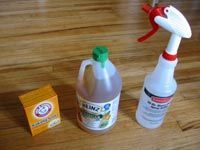 If I was going to clean a mattress, I would start with the vinegar and baking soda method. This method of cleaning mattresses is fun if you’re into science and stuff. Hell, your children might consider mattress cleaning as a profession if they do it this way. All you do is get a spray bottle and fill it with vinegar. Then, you spray it on the stain, making sure to get the stain good and wet. Let the vinegar sit for a few minutes, and then pour on the baking soda and let that sit for as long as it takes for the fizz to stop and the stain to dry. All that’s left is to vacuum up the mess.
If I was going to clean a mattress, I would start with the vinegar and baking soda method. This method of cleaning mattresses is fun if you’re into science and stuff. Hell, your children might consider mattress cleaning as a profession if they do it this way. All you do is get a spray bottle and fill it with vinegar. Then, you spray it on the stain, making sure to get the stain good and wet. Let the vinegar sit for a few minutes, and then pour on the baking soda and let that sit for as long as it takes for the fizz to stop and the stain to dry. All that’s left is to vacuum up the mess.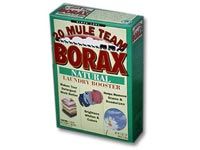 If you’re not into vinegar, you may want to try a different approach with something like Borax. Borax is amazing stuff. All you need to do is soak the spot with water, or just get it damp. Then, pour a little Borax on the spot and rub gently in a circular motion until you start to notice the spot fading. Once you’re satisfied with the results, simply let the water and Borax dry, then vacuum the Borax out of the mattress. A bristled vacuum extension might make getting the leftovers out of your mattress easier. You can get 20 Mule Team Borax at Amazon.
If you’re not into vinegar, you may want to try a different approach with something like Borax. Borax is amazing stuff. All you need to do is soak the spot with water, or just get it damp. Then, pour a little Borax on the spot and rub gently in a circular motion until you start to notice the spot fading. Once you’re satisfied with the results, simply let the water and Borax dry, then vacuum the Borax out of the mattress. A bristled vacuum extension might make getting the leftovers out of your mattress easier. You can get 20 Mule Team Borax at Amazon.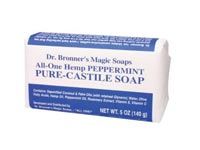 For some spots and stains, acidic cleaners won’t cut it, and that’s when you turn to good old soap and water.Put a table spoon of a biodegradable all-purpose cleaner like Ecover’s All Purpose Cleaner on the spot and rub it around until you’re certain you’ve covered the stain. Let that sit, then come in with a small bucket of warm water and a sponge and start scrubbing. Rinse the sponge in the water as often as possible to pick up as much of the soap and stain as possible. Thankfully, any residues left over from plant-based soaps are quite harmless.
For some spots and stains, acidic cleaners won’t cut it, and that’s when you turn to good old soap and water.Put a table spoon of a biodegradable all-purpose cleaner like Ecover’s All Purpose Cleaner on the spot and rub it around until you’re certain you’ve covered the stain. Let that sit, then come in with a small bucket of warm water and a sponge and start scrubbing. Rinse the sponge in the water as often as possible to pick up as much of the soap and stain as possible. Thankfully, any residues left over from plant-based soaps are quite harmless.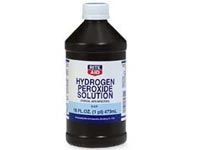 If you’re really serious about getting a stain out of a mattress, you might want to go for hydrogen peroxide. Yes, it’s true, hydrogen peroxide is a biodegradable substance. It smells like hell, but it degrades into oxygen and water very quickly. You want to be careful with hydrogen peroxide because it tends to bleach fabrics; I used to bleach my hair with it. Use a small cloth and dab at the stain with hydrogen peroxide. It shouldn’t need much scrubbing. Dabbing with a dry cloth should pick up the stain, and hydrogren peroxide’s low evaporative temperature should take care of the rest.
If you’re really serious about getting a stain out of a mattress, you might want to go for hydrogen peroxide. Yes, it’s true, hydrogen peroxide is a biodegradable substance. It smells like hell, but it degrades into oxygen and water very quickly. You want to be careful with hydrogen peroxide because it tends to bleach fabrics; I used to bleach my hair with it. Use a small cloth and dab at the stain with hydrogen peroxide. It shouldn’t need much scrubbing. Dabbing with a dry cloth should pick up the stain, and hydrogren peroxide’s low evaporative temperature should take care of the rest.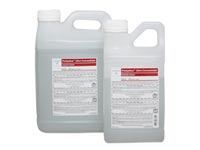 One method I haven’t touched on yet is the enzymatic cleaner. A lot of people are uncertain about enzymatic cleaners because they’re unfamiliar with the product and the process. First of all, a lot of enzymatic cleaners are sold as pet deodorizers. If you can find an organic pet deodorizer, you’re probably looking at an enzymatic cleaner. Then what you do is dampen the part of the mattress you want clean with this stuff and let it sit. The enzymes will actually digest any organic stain or smell created by an animal, such as yourself.
One method I haven’t touched on yet is the enzymatic cleaner. A lot of people are uncertain about enzymatic cleaners because they’re unfamiliar with the product and the process. First of all, a lot of enzymatic cleaners are sold as pet deodorizers. If you can find an organic pet deodorizer, you’re probably looking at an enzymatic cleaner. Then what you do is dampen the part of the mattress you want clean with this stuff and let it sit. The enzymes will actually digest any organic stain or smell created by an animal, such as yourself.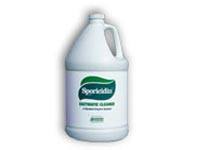 Enzymatic cleaners are tres chic in the organic cleaning industry. Enzymatic cleaners are nothing new; most contact lense cleaning solutions use enzymes to break down proteints that have built up on your lenses. Most enzymatic cleaners are, however, only used for stains and spots that pets or humans make. Sporicidin, Zymex, and Biozyme Fabric Cleaner are all good examples of mainstream enzymatic cleaners.
Enzymatic cleaners are tres chic in the organic cleaning industry. Enzymatic cleaners are nothing new; most contact lense cleaning solutions use enzymes to break down proteints that have built up on your lenses. Most enzymatic cleaners are, however, only used for stains and spots that pets or humans make. Sporicidin, Zymex, and Biozyme Fabric Cleaner are all good examples of mainstream enzymatic cleaners.
Organic Mattresses & Mattress Pads
If you’re dealing with a bed wetter, or for whatever reason your mattress tends to get dirty, you might want to consider a mattress pad with a latex rubber core (natural rubber, we call it) and a cotton sleeve. It’s easier to wash a mattress pad than it is to clean a mattress regularly.
You may also want to consider an organic mattress instead of an innerspring mattress. Innerspring mattresses made by large furniture companies usually contain flame retardant chemical compounds called PBDEs (Penta, Octa, and Deca).Studies have shown that PBDEs can affect hormone levels, as well as the reproductive and neurological systems of humans and animals. PBDEs have been banned by the European Union and efforts are being made here to do the same. Organic mattresses made of materials like cotton, wool, and latex rubber foam do not contain PBDEs and are often softer than commercial mattresses.
Some people buy commercial mattresses because they claim to stop the build up of dust mites. These claims are dubious, at best, and in order to make such claims companies will often treat their mattresses with any number of toxic chemicals. If you’re really concerned about dust mites, you should instead turn to high thread count cotton sheets and mattress covers. All natural, high thread count cotton sheets are washable, and nothing kills dust mites and their eggs faster than a hot water wash cycle.
Natural Products for Cleaning Mattresses
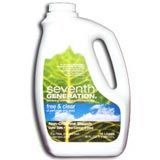 Seventh Generation Chlorine Free Bleach is a great alternative to chlorine bleach and is also very handy for getting spots and stains out before they become permanent. As it turns out, Seventh Generation’s bleach alternative is little more than hydrogen peroxide with a few additives.
Seventh Generation Chlorine Free Bleach is a great alternative to chlorine bleach and is also very handy for getting spots and stains out before they become permanent. As it turns out, Seventh Generation’s bleach alternative is little more than hydrogen peroxide with a few additives.
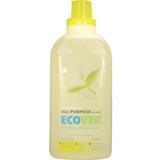 Ecover’s All Purpose Cleaneris just that, an organic, Vegan Society-endorsed all-purpose cleaner. I prefer Ecover cleaning products because I find their scents more palatable than some other brands, but Method, Seventh Generation, and Mrs. Meyer’s all make good all-purpose soaps that can be used to get stains and spots out of mattresses.
Ecover’s All Purpose Cleaneris just that, an organic, Vegan Society-endorsed all-purpose cleaner. I prefer Ecover cleaning products because I find their scents more palatable than some other brands, but Method, Seventh Generation, and Mrs. Meyer’s all make good all-purpose soaps that can be used to get stains and spots out of mattresses.